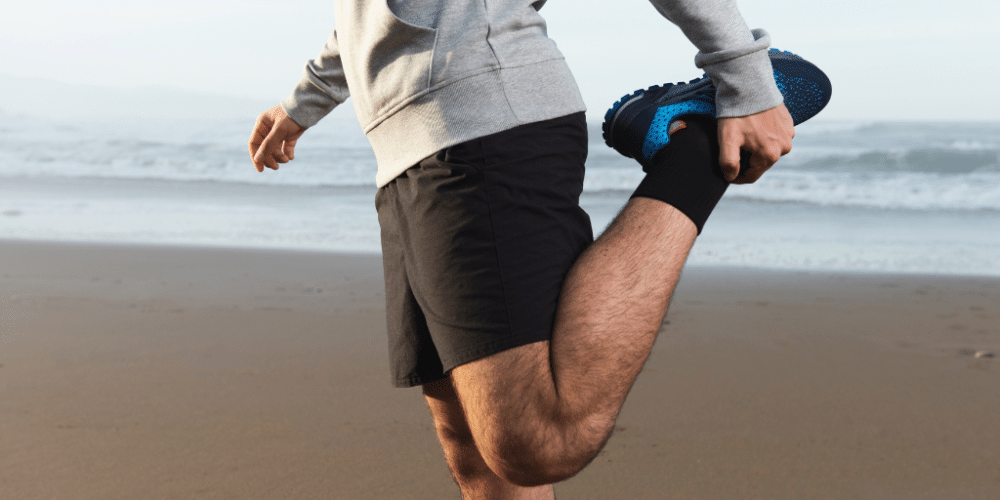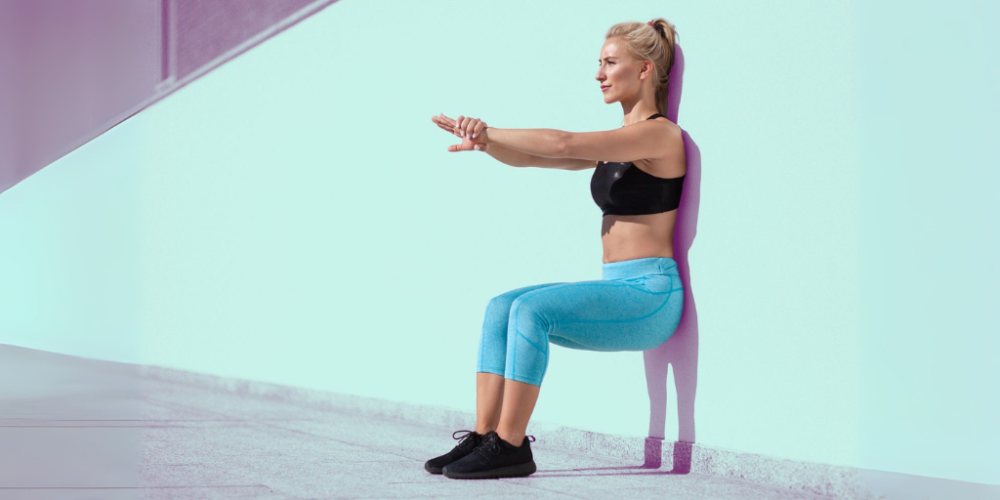
Do you want to lower your glucose levels, starting today? What if I told you that you have a powerful, built-in system for managing blood sugar, and it’s not in your medicine cabinet? I’m going to reveal the secret of how your legs can become your greatest ally in your fight for better health and stable blood sugar.
Having strong legs isn’t just about looking good or being able to climb stairs without getting winded. Your legs house some of the largest and most metabolically active muscles in your entire body. These muscles don’t just exist to help you walk, run, or stand up; they hold enormous potential to help you control your glucose levels. When you exercise, these powerful leg muscles can pull glucose directly out of your bloodstream for energy, often without even needing insulin to do it. The result? Your muscles become more sensitive to insulin and far more efficient at regulating your blood sugar.
In this article, we’re going to focus on two specific muscle groups in your lower body that have significant scientific evidence backing their role in diabetes management: the quadriceps and the soleus. I’ll explain exactly how they work and give you simple, effective exercises to strengthen them and, in turn, regulate your glucose.
Key Takeaways
- Your Legs are Glucose Sponges: The large muscles in your legs, particularly the quadriceps and soleus, are powerful tools for managing blood sugar.
- Exercise is Key: Activating these muscles allows them to absorb glucose directly from your bloodstream, which improves your body’s overall insulin sensitivity.
- Size Matters for Quads: Scientific studies show that having larger, stronger quadriceps muscles is directly linked to lower insulin resistance.
- The Soleus is a Secret Workhorse: This calf muscle is uniquely designed for endurance and is incredibly efficient at using glucose for fuel over long periods.
- No Gym Required: You can perform simple, effective exercises at home to strengthen these crucial muscles and gain better metabolic control.
- Stretching Helps Too: Beyond preventing injury, specific stretching techniques can also contribute to better glucose metabolism.
1. The Powerhouse in Your Thighs: The Quadriceps

The quadriceps, or “quads,” are the group of four large muscles located on the front of your thigh. They are responsible for extending your knee, which means you use them for virtually every major movement, from walking and running to simply getting up from a chair. But their function goes far beyond simple mechanics. One of the most fascinating findings in recent medical research is the direct relationship between the size of your quadriceps and your level of insulin resistance.
Multiple studies have now confirmed an inverse relationship here: the smaller and weaker a person’s quadriceps muscles are, the higher their insulin resistance tends to be. This means that as we age and naturally begin to lose muscle mass—a process called sarcopenia—we must pay special attention to the size and strength of our quads. Individuals with smaller quadriceps have been shown to have significantly more trouble managing their blood sugar. The equation is simple and powerful: small, weak quads can lead to higher insulin resistance, which leads to higher and more erratic blood glucose levels. This makes perfect sense when you remember that muscle is the primary place your body stores glucose after a meal. Less muscle means less storage space, leaving more sugar to circulate in the blood.
2. Simple Exercises to Strengthen Your Quadriceps

The great news is that you can fight back against this process. The quadriceps respond incredibly well to simple, consistent strength training. Here are four exercises you can do right in your own home to build stronger, more glucose-hungry quads.
- Squats: This is the king of leg exercises for a reason. To perform a squat, stand up straight with your feet about shoulder-width apart. Lower your body as if you’re about to sit in an imaginary chair behind you. It’s crucial to keep your back straight and your chest up. Make sure your knees track over your feet but do not extend past your toes. If you find this difficult, you can start by using a real chair. Practice sitting down and standing back up without using your hands or arms for support. Focus on squeezing your abdominal muscles and feeling the work in your thighs. This simple modification is a fantastic starting point.
- Seated Leg Extensions: This exercise isolates the quadriceps beautifully. Sit up straight and tall in a sturdy chair with your feet flat on the floor. Extend one leg straight out in front of you until it is parallel with the floor, or as straight as you can comfortably get it. Hold this extended position for 10 to 15 seconds, focusing on squeezing the muscles on the front of your thigh. Then, slowly lower it back down. Repeat with the other leg, and continue to alternate back and forth. This is an excellent exercise to do while watching TV or even sitting at a desk.
- Lunges: From a standing position, take a large step forward with one foot. Bend both of your knees to lower your body towards the floor, stopping when both knees are at approximately a 90-degree angle. Ensure your front knee is aligned directly over your ankle, not pushed out in front of it. Your back knee should hover just above the ground. Push off your front foot to return to the starting position, and then repeat the movement with the other leg. Lunges are fantastic for not only strength but also balance and stability.
- Wall Sits: Find a sturdy, clear wall and lean your back flat against it. Slide your body down the wall until your legs form a 90-degree angle, as if you are sitting in an invisible chair. Your knees should be directly above your ankles. Hold this position for as long as you can, whether it’s 15 seconds or a full minute. As you perform these exercises more regularly, you’ll find they become easier, and you’ll be able to hold the position for longer. This is a clear sign that your quadriceps are getting stronger, preparing you for better health as you age.
3. The Unsung Hero in Your Calf: The Soleus Muscle

Now, I want to talk about a muscle you’ve probably never heard of, but one that plays a special role in managing your glucose: the soleus. The soleus is a silent worker located in your calf, underneath the larger, more prominent gastrocnemius muscle. What makes the soleus so interesting is its composition. It is made up almost entirely of a special type of muscle fiber called type 1, or “slow-twitch,” fibers.
Think of these fibers as the marathon runners of your muscular system. They aren’t the fastest or most explosive, but they have incredible endurance. This endurance comes from their amazing capacity to use oxygen, glucose, and fat for fuel while they are activated. They are the perfect allies for sustained, long-term blood sugar control. So, when you exercise your soleus muscle, you aren’t just strengthening your calves; you are actively training these specialized type 1 fibers to become even better at absorbing all that excess glucose floating around in your blood. Activating the soleus is like turning on a small, quiet, but highly efficient glucose-burning engine in your lower legs.
4. Easy Ways to Activate Your Soleus Muscle

Just like the quadriceps, you don’t need a gym to get your soleus muscles working. Here are four simple ways to fire up this metabolic powerhouse.
- Standing Heel Raises: This is as simple as it sounds. Stand up straight, holding onto a counter or chair for balance if needed. Slowly raise your heels off the floor, coming up onto the balls of your feet. Hold the position for a couple of seconds, feeling the engagement in your calves, and then slowly lower your heels back down. You can do this exercise multiple times throughout the day—while brushing your teeth, waiting for your coffee to brew, or during a commercial break.
- Seated Heel Raises: You can train this muscle even while you’re sitting down. Sit firmly in a chair with your feet flat on the floor. Place some weight on your thighs—a backpack, a few heavy books, or even your hands will do. With the weight in place, slowly lift your heels as high as you can. Hold for a few seconds, then lower them. This targets the soleus muscle very effectively.
- Stair Climbing on Tiptoes: Find a set of stairs. Instead of climbing them normally, go up on the balls of your feet. This exercise requires a bit more balance, so be sure to use a handrail and do it carefully. It’s a fantastic way to combine a cardiovascular activity with targeted soleus strengthening.
- Incline Walking: Walking on an incline naturally forces your soleus muscle to work harder. You can do this on a treadmill by setting a moderate incline, or you can simply find a sloped street or hill in your neighborhood. Try to walk uphill for 10 to 15 minutes a day. This simple change to your daily walk can make a big difference.
5. Don’t Forget to Stretch!
Finally, let’s not forget the importance of stretching. We often think of stretching as something we do just to prevent injuries or muscle cramps. However, we are learning more and more about the benefits of passive stretching for glucose metabolism. While the research is still growing, some studies suggest that holding gentle, passive stretches can improve blood flow to the muscles and may even enhance their ability to take up glucose. So, know that when you take the time to stretch your legs after your exercises, you’re not just protecting yourself from injury—you may also be giving your glucose control an extra little boost.
Conclusion
You now have eight simple exercises that you can do without ever stepping foot in a gym. By strengthening your quadriceps and your calves, you will build a greater capacity to metabolize glucose, helping you keep your blood sugar levels under control. Maintaining strong and well-worked legs can be a huge advantage in making the management of your diabetes much easier. It’s all about combining different positive actions that add up over time. The result is not just a number on a glucose meter; it’s a healthier body, a better quality of life, and even an improvement in your mood and happiness.
Source: Dr. Elías

